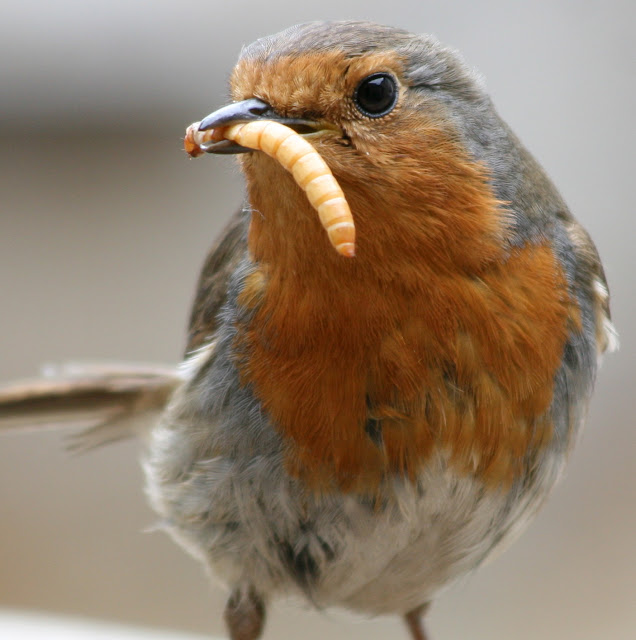This Bald Eagle Chick is the First to Hatch on Cape Cod in 115 years
Maloney pulled off the highway, got out his car and walked to a former airfield in order to observe the bird. He could see the eagle carrying sticks even without binoculars before it vanished over a stand. He thought it must have been building a nest and had a gut feeling that it was. A lake about a mile away would be a good place for the eagle to find fish. After scouting the area with a kayak, Maloney noticed a large cluster of branches at a top of a pine tree that surrounded the lake. It was right next to the eagle.
Maloney went to buy a camera and returned the next day with who took over 500 photos of the nest. The fuzzy head of a Bald Eagle chick is seen in several of the pictures. He reported the news to Mass Audubon and learned that it was the first recorded eaglet to be born on Cape Cod in 115years.
This eaglet was an important moment for Mass Audubon and Mass Wildlife conservationists. They have worked together to revive the Cape's Bald Eagle population since 1982. There are currently more than 80 nests in Massachusetts. Ten new nests were added in 2020. The species was therefore a>>https://www.mass.gov/news/species–spotlight–bald-eagles#:text=Initially%20listed%20as%20endangered%20under and concern%20as%20of%20January%202020. ">Reduced from "threatened to special concern" on the Massachusetts endangered species listing in January.
A small team of researchers from Mass Wildlife placed a small metal band around the ankle of the chick's five-week-old legs. This was the only pandemic-related eagle chick to be banded in 2020. The act of banding birds allows ornithologists to keep track state-protected species such as Bald Eagles. Andrew Vitz, state ornithologist, says that Andrew Vitz was able to capture the Cape's first eaglet in more than a century.
Vitz states that volunteers and birders such as Maloney play a vital role in keeping an eye on the state's eagles. "Most information we receive is from the public and that's what we rely on. Maloney, for his part, feels fortunate to have discovered birdwatching at a time when he was most in need. He says, "It's been a life-changing experience."
Bald Eagles, which have wingspans up to six feet, are the largest nesting birds in Massachusetts. They build enormous nests in tall, sturdy trees close to water bodies over the course of many months.
Bald Eagles used to be widespread throughout the country, but their historic numbers in Massachusetts are not known. It was estimated that there were at most 100,000 bald eagles in the United States when they became the national bird. The decline in Bald Eagle numbers in Massachusetts was caused by deforestation reaching its peak in mid-1800s and when more people hunted them for sport. Bald Eagle Protection Act was passed in 1940. It also covers Golden Eagles.
In the 1940s, A pesticide called DDT was introduced to farmers' crops. Wayne Petersen of Mass Audubon's Massachusetts Important Bird Areas Program, says that DDT interfered with the eagles' ability metabolize calcium. Their eggshells began to thin over time. "Some of these birds eventually laid eggs with no shells" by the mid-1960s. "> dropped below 500 across the country.
The U.S. government banned DDT from 1973, largely due to Rachel Carson's book Silent Spring. No Bald Eagles had been found to nest in Massachusetts by that time.
Mass Audubon and Mass Wildlife launched a Bald Eagle Restoration Program on Quabbin Reservoir, western Massachusetts nine years later. This program was launched following a similar New York program that had shown promising results. Vitz states that there was evidence that the program could be done here and it would succeed.
From 1982 to 1988, 41 eaglelets were brought in from Canada and Michigan by biologists. They were raised in artificial nests called hack towers. To keep humans from touching the birds, ornithologists used eagle puppets as their hands to feed them. The journey wasn't easy. One chick died while fleeing from the reservoir. But after five years, the birds became mature and began to nest. Two eaglets were born in 1989 at the Quabbin Reservoir's artificial nest.
Since then, the population has grown steadily and moved eastward. However, Bald Eagle chicks had not been seen on Cape Cod since May 2005, when Maloney saw the first documented Bald Eaglet since 1905. This milestone was only reached three decades after the birth of the first two eaglets from restoration. Vitz said that they took their time moving east because eagles often return to the same nesting area where they fledged, in this instance, more than 100 miles west. It is likely that they didn't migrate eastward to Cape Cod until competition for ideal nesting areas forced them out. This indicates that the western population has been growing rapidly.
Vitz says that the birds are doing so well that competition between raptors for nest sites is still the biggest threat to the state's Bald Falcons. Bald Eagles trying to encroach on nests were responsible for the deaths of chicks in eastern Massachusetts' two aeries. Both sites were closely monitored via webcam. Vitz says, "People watching were devastated." Vitz says that the chicks were named by their parents. It was quite an ordeal. The nesting eagle couple on Martha's Vineyard lost their eggs due to an altercation.
Vitz and other ornithologists expect the Bald Eagle population to rise despite these unfortunate events. He says, "The habitat is now available to support more eagles that we have today." This includes Cape Cod's eaglet who is expected to fledge within the next three week. Vitz believes that Vitz will hear the news from an avid birdwatcher when it happens.



Comments
Post a Comment